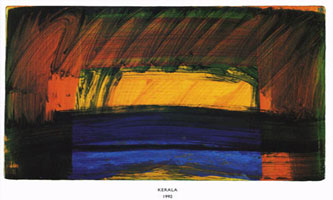|
 English 696 Student Oral Topics>> English 696 Student Oral Topics>>
English 696 Preparing Annotated Bibliography>>
WHAT IS AN ANNOTATED BIBLIOGRAPHY?
An annotated bibliography is a list of citations to books, articles, and documents. Each citation is followed by a brief (usually about 150 words) descriptive and evaluative paragraph, the annotation. The purpose of the annotation is to inform the reader of the nature, relevance and quality of the sources cited. Spend most of the annotation summarizing the argument of the source. Briefly comment on its intellectual level and usefulness.
BASIC MLA STYLE FORMAT FOR AN ANNOTATED BIBLIOGRAPHY
Format your citations in the same manner as for a normal reference list, then follow these instructions for adding an annotation.
1. Hanging indents are required for citations in the bibliography, as shown below. That is, the first line of the citation starts at the left margin. Subsequent lines are indented 5 spaces or half an inch. Set your word processing program to do this automatically.
2. As with every other part of an MLA formatted essay, the bibliography is double spaced, both within the citation and between them. Do not add an extra line between the citations.
3. The annotation is a continuation of the citation. Do not drop down to the next line to start the annotation.
4. Consult chapter 5 of the MLA Handbook for format and conventions to be employed for each type of entry. Remember to abbreviate publisher’s names (e.g. Oxford UP)
5. Order your entries in alphabetical sequence. If the author’s name is unknown, alphabetize by the title, ignoring any initial A, An, or The.
INSTRUCTIONS FOR PREPARING YOUR ANNOTATED BIBLIOGRAPHY
Construct an annotated bibliography in MLA style of at least seven secondary sources of critical writings concerning one theoretical approach to one of the two course texts. Indicate in your title the theoretical approach and text to which it applies. Use 12-point font and one and a half spaces between lines (even though MLA requires double spaces). Cite at least one book, one essay in an anthology, one essay in a scholarly journal, and one electronic source. Make sure you identify which theory and which literary text you are using in your bibliography.
SAMPLE
Your Last Name + page no.
Your Name
My Name
Course number and/or title
Date
Boumelha, Penny. Thomas Hardy and Women: Sexual Ideology and Narrative Form.
Totowa: Barnes, 1982. Print. Argues in chapter devoted to Tess for the centrality
of the relationship between sexual ideology in Tess and an understanding of the
form of the novel. Tess herself is seen as a site for the literary exploration of
ideologies of nature. Uses Marxism and structuralism in a feminist analysis of the novel.
Grossman, Julie. “Hardy’s ‘Tess’ and ‘The Photograph’: Images to Die For – Thomas Hardy.”
Criticism 34.3 (1993): n. pag. Web. 31 Aug. 2007. Claims that Hardy thematizes his
identification with Tess in the novel through the various ways in which male characters,
the narrator, and a hypothetical observer view Tess as an image. By incorporating his
own position as an object of public vision into his representation of Tess, and then by
representing their escape from that role into states of corporeal dissolution, Hardy
transforms an unsatisfactory image of himself into a vindicated and empowered force
beyond the critical gaze of the public. Advanced critique of Tess of the d’Urbervilles.
Jacobus, Mary. “Tess: The Making of a Pure Woman.” Tearing the Veil: Essays on Femininity.
Ed. Susan Lipshitz. Boston: Routledge, 1978. 77-92. Rpt. in Thomas Hardy’s Tess of the
D’Urbervilles. Modern Critical Interpretations. Ed. Harold Bloom. New York: Chelsea House,
1995. 223-41. Print. Examines the nature of Tess’s purity. Asserts that Tess cannot be
immune to the sexual experience she undergoes. Hardy’s attempt to deny her the right of
participation in her life deprives her of tragic status and reduces her to the victim she
becomes. Classic feminist interpretation of Tess of the d’Urbervilles.
Lovesey, Oliver. “Reconstructing Tess.” Studies in English Literature 1500-1900 43. 4 (2003):
913-938. Print. Considers one of Tess's central conundrums to be the emphasis placed on
physical virginity in a novel of doubt, located within a context of modern skepticism. Cites
the notoriously ambiguous and fragmentary incident in the Chase, where the gaps in descriptive
detail resemble the gaps in Tess herself. Good poststructuralist understanding of the novel.
REFERENCES
See the MLA Handbook for Writers of Research Papers, 7th ed., 5.1 for formatting regular works cited.
For another sample of an annotated bibliography in MLA format see:
http://research.lesley.edu/mla
|